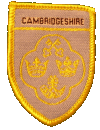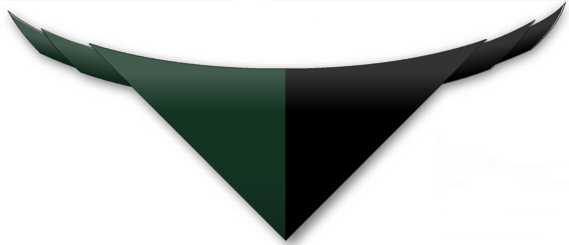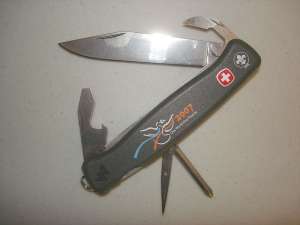|
Your first PenknifeThis is not permission, but advice.Cubs may not carry penknives.Know the law:Before going into how to use your knife and how to avoid cutting yourself too often, you should know the law on knives: It is an offence for any person, without lawful authority or good reason, to have with him in a public place, any article which has a blade or is sharply pointed except for a folding pocket-knife which has a cutting edge to its blade not exceeding 3 inches. [Criminal Justice Act 1988 section 139(1)] Although the 'good reason' clause in the law allows for some common sense so that, for instance, people engaging in bush craft can carry a knife larger than three inches (as leaders will occasionally do for demonstrations or as part of safety equipment), you cannot rely on a police officer seeing things the same way that you do. Confiscation often leads to destruction of the knife or weapon. In a nutshell, standard penknives (such as Swiss Army knives) are OK for scouts to carry at, to and from, camp. Larger knives can be legal, but it isn't clear cut and they aren't recommended. Scouts used to carry a knife as part of the uniform but they don't do so now; knives should really only be carried if needed (such as at camp). Cubs may only use or carry a penknife under their parent's explicit direct supervision and well away from any cub activities. They may not bring one to camp. Having understood the law and how it relates to scouting, it's time to get to know your knife and how to use it.
First and last rule:You will cut yourself. It is up to you to control how infrequently and minimal the injuries you get are. To minimise the frequency of the blood letting consider this hard won advice. On first receiving your penknife (before you even open a blade)1. Read the instructions of the penknife. They may tell you how to maintain and use the tools, what they all do, whether to oil it, how, and with what, to clean it. It is said that most Swiss Army knife owners only know ¾ of the tools on their knife 2. Look at the knife and see how it works, how the blades are held in place. Notice that the blades do not lock (see the law section above). Think what would happen if they closed on your finger. 3. Look at how far each blade opens. Some only open to 90 degrees. Think what would happen if you tried to push it further. 4. Hold the knife in your hand and notice how you can tell which way is up, which way it is facing, and therefore which is the egde that will cut you. Once you know you can manage that, now do so in the dark, or with your eyes shut. Opening the blades1. Open the blades or tools one at a time. Opening more than one at a time will make it difficult to use and tricky to close the blades. Sometimes it helps to open other blades first, but close the unwanted ones before using it. 2. Consider what the blade can and cannot realistically achieve. You will learn by experience but do not expect more of it than is likely. Many blades will snap off if used as a screwdriver on a stiff screw, for instance. 3. Imagine the consequences of pushing a blade the wrong way in an attempt to close it. This is particularly nasty with my reamer, which stands out at 90 degrees – it cuts to the bone! 4. Go back to item 4 in the previous section. Do it properly this time. I hope that you are examining your knife in a good light and at your leisure. This will not be the case on camp. You will looking elsewhere, in the dark and wet with flapping cords in your face and needing to close your knife quickly, with one hand whilst holding on to an acre of wet canvas. You will be tired, someone will be shouting at you. Using the blades1. Always cut away from yourself. In particular never cut towards your thigh or groin as there is a big artery tucked in here which can be life threatening if damaged. 2. Practice using those bits you are uncertain about. The tin opener really works and quickly, but not first time: you need to know the knack. Practice at home, not when hungry at camp in the fading twilight. 3. Practice holding the knife so that, should it snap shut, your fingers are free of the closing blade. Do not be tempted to place the reamer between two fingers in a fist to get greater twist. The power you generate will also force the reamer shut pushing your bloodied finger out of the way. 4. Maintain your knife; if it is unoiled and stiff with mud you are more likely to push the wrong way or slip onto the blade trying to close it. First and last rule:You will cut yourself. It is up to you to control how infrequently and minimal the injuries you get are.
There is an element of coming-of-age about getting your first penknife; a mastery of your own environment with a tool that is too dangerous to be trusted on mere children. Knives are truly life savers when in extreme situations and using one can be very satisfying when not; knowing how to use one is something everyone should be prepared to learn, scouts in particular. | |||||
 |
28th Cambridge Scout Troop | |||||
| Beavers | Cubs | Scouts | Explorers | Group | Diary | |





